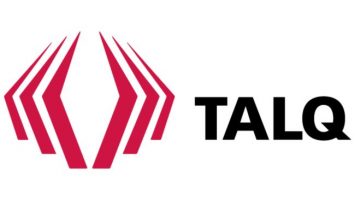Unbroken growth trend for TALQ certifications increases interoperability in smart cities

The TALQ Consortium, which developed the Smart City Protocol, a global interface standard for smart city applications, continues to grow its membership base and announces every few weeks new officially TALQ-certified products. The TALQ-certified products include Central Management Software (CMS) and Outdoor Device Networks (ODN; Gateways) for various smart city applications, currently from 47 different vendors globally. By certifying their products according to the Smart City Protocol, manufacturers enable interoperability with a wide range of systems from other vendors. For cities and municipalities, the growing number of certified solutions offers not only greater flexibility and freedom of choice, but also the ability to avoid vendor lock-in when investing in smart city applications—such as Smart Street Lighting, Waste Management, Parking Solutions, Environmental Sensing or Traffic Control.
Founded in 2012, the TALQ Consortium has developed a globally recognised standard for managing software interfaces used to control and monitor diverse smart city applications. Since 2017, the Consortium has implemented a strict certification procedure to validate the correct implementation of the TALQ Protocol. As public tenders increasingly require compliance with open standards, the demand for TALQ certifications has risen in the past years. The Consortium continues to grow and consists currently of 82 member companies. For manufacturers, certification provides reassurance that their systems are both future-ready and interoperable with solutions from other vendors.
The 74 TALQ-certified products include 31 Central Management Software (CMS) and 43 Gateways (Outdoor Device Networks, ODN). All certified products now feature a detailed list of completed ‘Functional Tests’. These functional tests are essential for giving cities, utilities and planners clear insights into what each product can do. Each test corresponds to a defined set of technical requirements—explained in plain, accessible language, free from TALQ-specific terminology.
“While TALQ continues to evolve to support new use cases, and more and more cities are asking for full multi-supplier support, a rare combination is required for any solution on the market: the ability to implement new features rapidly, while preserving full backward compatibility with earlier versions, and maintaining quality and compliance with 100% of the use cases.”, says Emmanuel Touron, the CEO of Citylinx. “That combination is not accidental. It reflects years of modular design, strong interface abstraction, and rigorous testing culture. It also means that cities, utilities, and integrators can confidently rely on Citylinx to remain interoperable in dynamic, multi-vendor environments, no matter how the standard evolves.”
Or as Hanno Baumgartner, one of the founders of esave ag puts it “We are proud that both our CMS and Gateway have officially been TALQ-certified. At esave ag, we believe in the future of energy efficiency and in empowering cities through open, vendor-independent technologies—values that are fully reflected in the TALQ standard. With this certification, we now offer an interoperable interface for our energy management solutions, enabling cities around the world that rely on TALQ-certified systems to build robust and efficient energy infrastructures.”
“Modern cities require solutions that are not only intelligent, but above all secure and scalable. The integration of the TALQ Protocol with ISO 27001 represents our strategic response to the growing demands for interoperability and cybersecurity. In the Smart City context — where lighting infrastructure evolves into a data carrier and a service platform — open standards are essential. They enable seamless integration with other urban systems, reduce the risk of vendor lock-in, and ensure compliance with regulations such as the NIS-2 directive. Today, decision-makers must view lighting not merely as a source of illumination, but as a strategic component of urban digital transformation.” explains Mariusz Ejsmont, the technical director of LUG Light Factory.
The only place to find all officially certified solutions remains the Consortium’s website where visitors can also download a detailed ‘Capability List’ for each system which includes Functional Tests passed plus further technical details of each solution.
Comment on this article below or via X: @IoTGN and visit our website IoT Global Network
